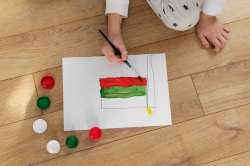If you’re reading this, you’re taking a positive step toward supporting your child’s learning journey. You want to help your preschooler understand patterns and sequences, and that’s commendable! Patterns are everywhere: in the rhythms of our daily life, the clothes we wear, and even the food we eat. Recognizing them early on sets the stage for skills they’ll use throughout their lives.
Now, I know what you might be thinking: “Sounds great, but where do I start?” Well, it’s simpler than you might believe. Think about the repetitive and fun songs you sing with them or the games you play. Most of these naturally involve patterns! Remember, it doesn’t have to be complex. Even small everyday moments can be perfect opportunities for learning. So, as you enjoy reading this article, imagine turning ordinary moments into extraordinary pattern-spotting adventures.
1. Daily Routines to Learn Patterns and Sequences
Every day, without even realizing it, we’re teaching our kids. The simple routines we follow? They’re patterns. From the moment the alarm rings to that final bedtime story, sequences are all around. Imagine the morning rush.
First, you both wake up, maybe with a yawn and stretch. Then it’s off to the bathroom: “First, we brush our teeth, then we put on our clothes, and after that, we’re all set for breakfast.” See the pattern there? Pointing these out to your little one does wonders. Over time, they’ll start seeing these sequences themselves. They might even remind you: “Hey, we forgot to brush our teeth!” or “After this, it’s breakfast time!”
This isn’t just about routines; it’s about setting foundations. Foundations in recognizing sequences. By making them a part of your day, you effortlessly help your preschooler understand patterns and sequences. Remember, it’s the simple moments that often teach the most. So, next time you’re rushing through the morning, slow down a tad and spot those patterns with your child. They’ll thank you for it later.
2. Patterned Clothing
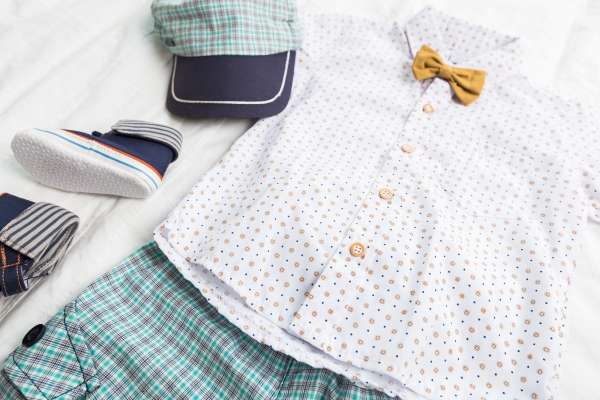
I bet you’ve spent many mornings sifting through cute tiny outfits for your child. Have you ever stopped to look closely at those clothes? Those stripes, polka dots, or even the quirky designs on them? They aren’t just decorations; they’re patterns. And here’s a little secret: these everyday items can be your secret weapon to help your preschooler understand patterns and sequences.
Now, every morning when you’re dressing them up, take a moment. Let’s make it fun. Ask, “Do you see the blue-yellow-blue on your shirt?” or “How about the sequence of stars on this dress?” They’ll start to eagerly look for these patterns, and, over time, they’ll point them out to you. It’s these small everyday moments that provide learning opportunities.
The world is filled with patterns, and clothing is just the start. This is a fantastic way to help your preschooler understand patterns and sequences. It’s fun, it’s engaging, and the best part? It doesn’t even feel like a lesson. Any time you’re sorting through their wardrobe, remember you’re holding a fun and interactive teaching tool.
3. Clapping and Music: Great way to Teach Patterns and Sequences
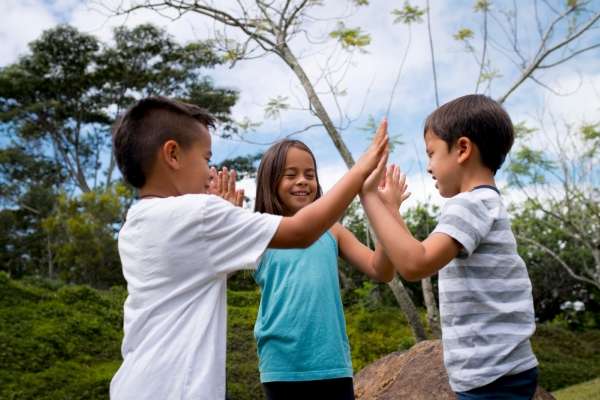
Isn’t it amazing how music resonates with everyone, no matter the age? Just think about it: a familiar song comes on, and your child’s face lights up. Their tiny hands start tapping, and their feet begin to shuffle. That’s the beauty of music—it’s innate and instinctual.
But there’s more to music than just enjoyment. Each rhythm and each beat is a lesson in patterns. Start with something simple: a basic clap. Try “clap-clap-pause-clap.” Ask your child to mirror you. Before you know it, they’re not just copying, they’re anticipating the next move. That’s them recognizing the pattern.
This is one of the most enjoyable ways to help your preschooler understand patterns and sequences. And if you introduce instruments like bells or drums? You’re opening up a world of pattern possibilities. The sequences in tunes, the repeating chorus, even the highs and lows in melodies—they’re all teaching moments. Whenever you play music with your child, remember: Do not just groove; educate.
4. Beads and String
Every parent has probably stumbled upon those tiny beads scattered across the floor at least once. But did you ever consider how these little gems could be a treasure trove for learning? Beads aren’t just craft supplies; they’re a doorway to understanding sequences.
Picture this: You hand over a string and beads of various colors. Encourage them to try “blue bead, yellow bead, blue bead,” and watch as their focus sharpens. Their small fingers will move with purpose, selecting each bead carefully. It’s more than just craft time—it’s a lesson in patterns, and they don’t even realize it.
Using beads and string to help your preschooler understand patterns and sequences is both fun and effective. The pride on their face when they hold up their beaded creations, having unknowingly mastered a pattern, is priceless. Plus, it’s a hands-on activity, which we all know, makes learning stick. So next time they’re itching for a craft, hand them those beads and string. It’s not just an accessory they’re creating; it’s a foundation for pattern recognition.
5. Art Projects
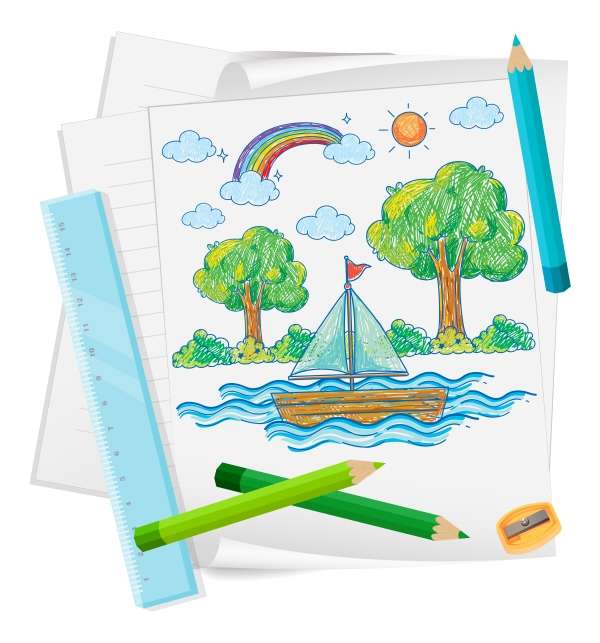
Art has a beautiful way of captivating the imagination, when a child is given the tools to create, they not only express their feelings but also unknowingly indulge in learning. Now, we’re not just talking about Picasso-like masterpieces. Simple art projects can be the golden key to pattern recognition.
Here’s a fun idea: The next time your child is in an artsy mood, slide over some stickers, stamps, or colored pencils. Gently guide them, “How about trying a pattern with these colors?” It’s intriguing to see their eyes light up with concentration, deciding if they want a red-blue sequence or maybe a yellow-green-yellow-green one. Each line they draw or stamp they place could be them exploring the world of patterns.
Using art projects to help your preschooler understand patterns and sequences can be an enriching experience. It combines creativity with cognition. And the best part? They’re so engrossed in their art that they don’t even realize they’re learning. Let’s color their world with knowledge!
6. Pattern Blocks and Tangrams
Remember those moments when you’re utterly engrossed in a puzzle, lost in its intricate details? That’s the world of pattern blocks and tangrams for preschoolers. These aren’t just toys; they’re brain teasers, creativity boosters, and the first steps into the intriguing realm of geometry.
Imagine handing your child a set of colorful pattern blocks. At first, they might randomly place them, but soon, you’ll notice patterns emerging. Maybe it’s a succession of triangles followed by squares, or perhaps they’ve managed to fit all the pieces perfectly, showcasing an innate understanding of shapes and how they fit together.
Now, introduce them to tangrams. These seven tiling pieces that come together to form a square can be rearranged into various shapes. The challenge? “Can you make this shape using these pieces?” or “Look at the pattern I’ve made. Think you can do it too?” It’s like watching their little brains in overdrive, figuring out the puzzle, understanding the sequence.
Let your next fun and educational activity be those pattern blocks and tangrams. They’re more than just playthings;
7. Nature Patterns
Ever considered the world outside as one massive workbook for your child? Nature is teeming with patterns, and the best part is they come with a touch of real-world magic. Every leaf, every petal, and every fluttering butterfly is a lesson waiting to be unraveled.
Think about it: The petals on flowers often follow a particular arrangement, while the veins on leaves create mesmerizing designs. And haven’t we all paused to admire birds sitting in a sequence on a telephone wire, as if they’ve all decided to follow an invisible rule?
Taking your child on a nature walk can be a dual treat. Firstly, it’s a break from the indoors, a chance to breathe in some fresh air and stretch those little legs. Secondly, it’s a real-time, hands-on pattern recognition activity. You can ask, “Do you see how these flowers are arranged?” or “Look at those birds; can you spot a pattern?”
Every nature trail can be a fun classroom where the lessons are as vivid as they are valuable.
8. Food Patterns
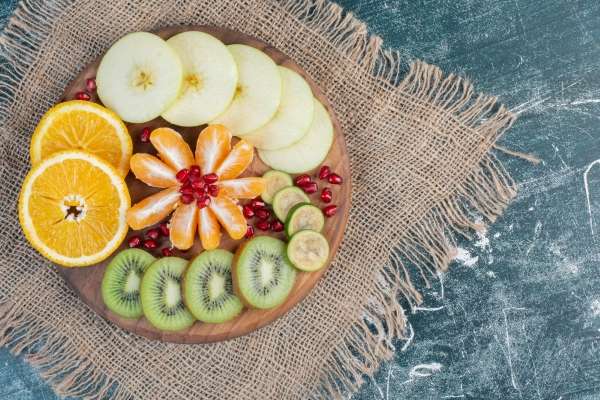
It is amazing how something as simple as snack time can turn into a vibrant learning session. Food, with its varying shapes, sizes, and colors, becomes the perfect canvas for introducing patterns to young minds.
Picture this: You’re in the kitchen with your child, laying out a plate of vibrant strawberries and blueberries. “How about we create a fun pattern with these?” you suggest. Together, you arrange them as strawberry-blueberry-strawberry-blueberry. The bright reds against the deep blues not only look visually enticing but also introduce the concept of alternation.
Or consider those moments when you have different snacks at hand, like crackers and cheese cubes. You could challenge your little one, saying, “Can you make a pattern using these two?” Before you know it, they’re engrossed in arranging them in a line, possibly going cracker-cheese-cracker-cheese.
And the beauty of it? Once they’ve had their fill of pattern-making, they get to eat their creations! It’s the perfect blend of play and nutrition, making learning not just engaging but deliciously rewarding.
9. Story Patterns
There’s something magical about stories. Beyond the mesmerizing worlds they create and the characters they introduce, stories have a structure, a rhythm that can be a brilliant tool for teaching patterns
Consider the beloved tales many of us grew up with. In “The Very Hungry Caterpillar” by Eric Carle, there’s a rhythm, a predictability that delights children. As the days progress and the caterpillar indulges in his feasts, kids start to anticipate, “What’s next?” That anticipation, that guessing game, is them recognizing the pattern, the sequence the story follows.
And it’s not just this book. Numerous tales, from fairy tales to modern stories, often have repetitive elements. Whether it’s the recurring “Fee-fi-fo-fum” of the giant in “Jack and the Beanstalk” or the repeated attempts of the wolf in “The Three Little Pigs,” patterns abound.
Engaging with your child in storytelling can be a delightful exercise. As you read or narrate, pause occasionally, and ask, “What do you think happens next?” It’s a nudge, a prompt for them to detect the pattern
10. Use Dance and Movement to Teach Patterns and Sequences
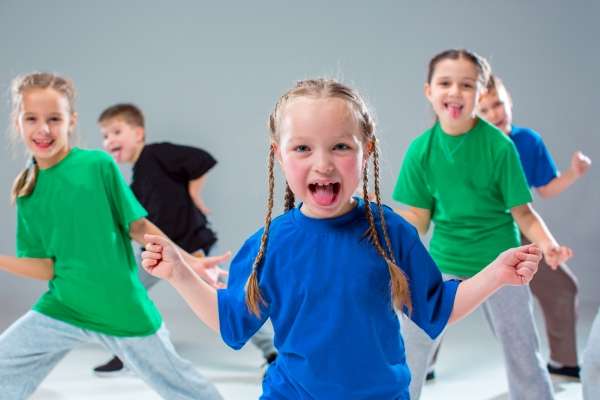
Dancing is not just about moving your body to the rhythm; it’s a joyful journey through patterns and sequences. Think about it. Every dance step, every twirl, and every jump follow a particular sequence that’s repeated to create a dance routine.
Now, here’s a fun idea. Why not teach your little one a straightforward dance routine? Start with a simple step, then a twirl, followed by a clap. Once they get the hang of it, challenge them to remember and repeat the steps in the correct order. This playful activity can be an excellent way to help your preschooler understand patterns and sequences. And the best part? It’s loads of fun!
When you have some free time or want to break the monotony, crank up the music and dance away. It’s a fabulous way to bond, get some exercise, and sneak in a lesson about patterns all at once! Don’t miss out on this rhythmic learning opportunity.
11. Pattern Worksheets
Who knew learning could be so much fun? Worksheets, especially those designed for preschoolers, combine creativity with learning. Imagine a sheet with a sequence of shapes: circle, square, circle… and then a blank. Your little one’s task? To identify what comes next and color it in!
The beauty of these worksheets is they offer a visual way to help your preschooler understand patterns and sequences. While it may seem like they’re just coloring or doodling, they’re actually training their brains to recognize and predict patterns. It’s like a puzzle, and kids love puzzles!
Additionally, these worksheets double up as a coloring activity, honing their fine motor skills. If you’re on the lookout for engaging educational activities, just hit up the internet. You’ll find countless printable pattern worksheets tailored for preschoolers. Before you know it, they’ll be eagerly waiting for the next sheet, ready to crack another pattern puzzle!
12. Interactive Games
Have you ever observed how naturally drawn kids are to technology these days? It’s impressive, to say the least. While some may argue about screen time, there’s no denying the educational potential of the digital world. With the tap of a finger, our little ones can embark on learning adventures that can be both exciting and beneficial.
The wonderful thing is, there are countless apps specifically tailored to help your preschooler understand patterns and sequences. Think about it—a screen bursting with colors, charming characters guiding them, and challenges that make them think: “.
With these games, sequences can be experienced in varied contexts, whether that’s arranging digital fruits in order or matching vibrant gems to solve a puzzle. The opportunities are boundless, and with regular engagement, you’ll notice your child applying these lessons to real-world situations.
So, next time you hand over a tablet or smartphone, consider directing them to one of these pattern-focused apps.
13. Daily Conversations Help in Understanding Patterns and Sequences
Chatting with your little one is one of the joys of parenthood, right? Those innocent queries, those attempts to pronounce a new word or even just their bubbly chatter—it all melts the heart. But did you know that amidst these heartwarming conversations, there’s an opportunity to introduce some valuable learning?
Here’s a nugget of wisdom: when you help your preschooler understand patterns and sequences during your regular talks, the lessons stick more deeply. Think about it. You’re at the park, and you casually mention, “Look at those birds. They’re sitting in a big-small-big-small pattern on the fence.” Or while setting the dinner table, you could say, “See, we’ve got a plate-spoon-plate-spoon pattern going on here.”
It’s as natural as breathing, yet so educative. Just by turning their attention to everyday things, you’re developing their analytical skills. And the best part? They don’t even realize they’re learning. Instead, they’re soaking up knowledge in the most organic way, embedded in the love and trust of your daily exchanges. So, keep those conversations flowing.
14. Building Blocks
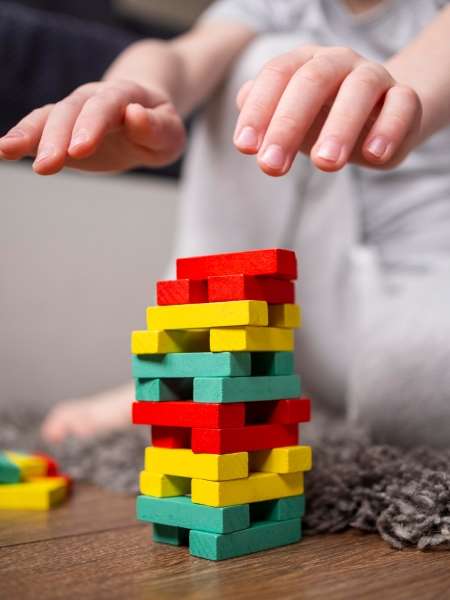
Isn’t it amazing how the simplest of toys can be the most educational? Take building blocks, for example. They might seem like just colorful pieces to you, but for a preschooler, they’re an entire world waiting to be discovered.
Every time your child picks up a block, there’s a thought process involved. Which block to choose next? Does this blue one fit after the red? And hey, if they stack a big block followed by a smaller one, and then repeat that, they’ve just formed a pattern! It’s like a light bulb moment, each time they get it right.
You can gently guide them, of course. “Oh, I see you’ve stacked the green and yellow blocks together. What if we try green-yellow-green?” It’s all about helping them see and recognize patterns, even in play. The sheer joy when they proudly show you a tower with a deliberate pattern is priceless.
The beauty of building blocks is that they blend fun and learning seamlessly. Not only are they improving their motor skills and hand-eye coordination, but they’re also getting an early start on logical thinking and pattern recognition.
FAQ: How do I know if my child is grasping the concept of Patterns and Sequences?
Recognizing patterns is a skill that develops gradually, but there are some telltale signs to look out for:
Anticipation in Routines: The morning routine can be quite telling. If they remember after brushing their teeth comes putting on clothes, and then breakfast, that’s them understanding a sequence!
Replication During Play: Give them some toys and see what they do. If they consistently line up cars in a color pattern or stack blocks by size, that’s a big hint right there.
Creating Own Patterns: This is the next step up from replication. If they start creating their own unique patterns with beads, blocks, or even drawing, it’s a clear indicator they’ve grasped the concept.
Correcting Broken Patterns: Place some objects in a pattern and deliberately break the sequence. If they correct it, bingo! They’re on track.
Verbal Recognition: Sometimes, they might verbally point out patterns without any prompt, like “Look, Mom! The stars go big-small-big-small!”
Remember, each child is unique and they might not exhibit all these signs. The key is patience and continuous encouragement. Celebrate their small victories.
Conclusion
Absolutely, patterns and sequences truly are all around us! From the clothes we wear to the rhythm of our daily routines, there’s a world of patterns waiting to be discovered by your little one. It’s all about turning ordinary moments into teachable ones. And let’s not forget: each child’s journey is distinct.
While some may instantly recognize and replicate patterns, others may tread a more explorative path. Regardless of the pace, the goal remains the same: to nurture their curiosity and understanding. Always aim for experiences filled with joy, engagement, and wonder.
Here’s to countless delightful moments of pattern spotting and sequence building with your child! Cheers!





